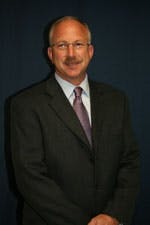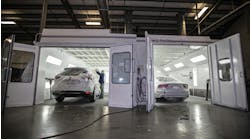Content brought to you byABRN. To subscribe, click here.
What you will learn:
- Why some shops are transitioning from DRPs to OEM-certified programs
- What the transition process is like
- What increase in gross profit a shop can expect from moving to OEM-certified programs
There is a lot of discussion about whether a shop should maintain its dependency on Direct Repair Programs (DRPs) or focus more on original equipment manufacturer (OEM) certifications. Some believe they can do both, while others believe they need to make a choice. Both have strong (sometimes really strong) arguments for both positions. There are DRP shop owners and managers who say they are meeting OEM requirements and staying within their DRP program guidelines while others are struggling in that environment.
I am seeing a gradual transition by independent shops to an OEM-certified-focused platform, while national multi-store operators (MSOs) are concentrating on DRPs. I see this happening for two reasons:
- MSOs have the benefit of special agreements with insurance companies that give them an advantage over independent collision centers.
- Independent shops are becoming OEM-certified as one way to improve their market share.
I believe we will see this trend continue as independents work to better position themselves in their markets.
Moving from being DRP-dependent to OEM-focused is not something you do overnight. It takes some strategic planning to determine which DRP to move away from and which OEM certification to pursue. To begin, I suggest reviewing each DRP and determining the volume of work you receive, discounts/penalties paid and overall profitability of repairs. Through this review, I am confident you will find one DRP that is costing you more to repair vehicles than others. This is the first one I would reduce the dependency on. As you begin to recoup the business lost by the dismissed DRP through OEM certification, you can focus on the next DRP to reduce dependency on.
As I coach shops in their transition to OEM certifications, I encourage them to carefully select their choices. It is important to focus on OEM certifications that are plentiful in their market. The acquisition of certifications has costs involved, and you must be able to recoup those costs through vehicle repairs. The purpose of gaining OEM certifications is to draw volume to a collision center that will replace the amount of work lost to the national MSOs through DRP agreements. Using market surveys and vehicle registration numbers will help you determine which OEM certification is the right fit for your collision center.
I also suggest that when you research OEM certifications, you also review and compare training/equipment requirements. It is best to select certifications that have similar training/equipment requirements to reduce the cost and maximize the benefit of obtaining them. Most certification programs have their training/equipment requirements published on their websites, and equipment vendors also have equipment lists. I-CAR also identifies training requirements.
The benefit of focusing on OEM certifications versus being DRP-dependent is immediately visualized in gross profit. My audits have shown that OEM-certified-focused collision centers appreciate five to 12 percent increase in gross profit per repair order. They also realize a higher average repair order which affords them the ability to make more money while repairing less vehicles. I believe these are positive improvements and worth the expense of certifications. The key is to make the transition calculated and methodical to ensure you maintain profitability during the move from DRP-dependency to OEM certification-focused. Rushing into the changeover can cause disharmony, as it is a culture change which always takes patience. Do your homework and make the investment once. It will pay off in big dividends and ensure that your business has the sustainability needed to succeed well into the future.




